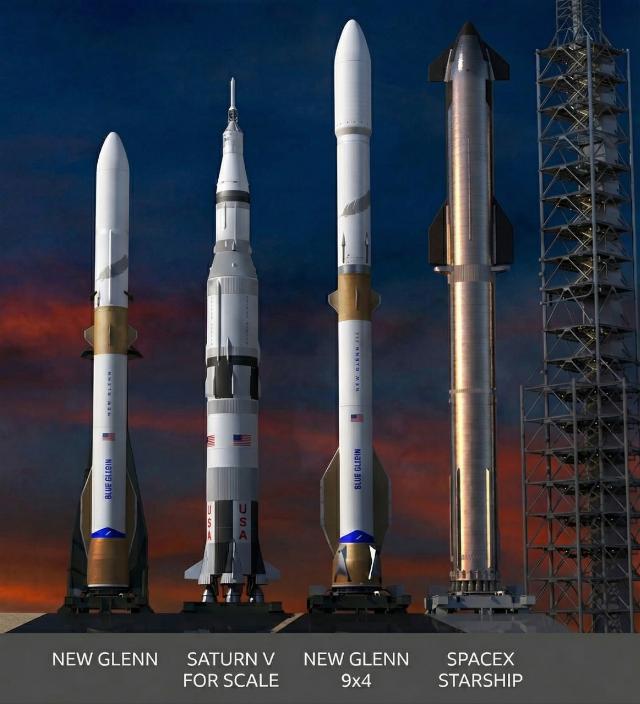After the recent first orbital payload launch, Jeff Bezos' company has seriously rethought its plans. Now its developers are talking about increasing the size and payload of their rocket, which is moving it from a heavy to a superheavy class. The question remains how they plan to ensure its competitiveness against the background of SpaceX.
Ten years ago, a revolution took place in the global rocket industry: orbital launch vehicles became partially reusable, as their first stage began to land on Earth. Although Korolev Design Bureau was the first to propose such a scheme half a century ago, no one in Russia was interested in it. But it was implemented by Elon Musk's company (Falcon 9 rocket).
Other players began to launch similar programs: for example, in Russia, a rocket with a Falcon 9 scheme was called Soyuz-7 . But the fastest way to repeat this pattern was the American company Blue Origin. In November 2025, just 10 years later, she managed to copy Musk's approach and land the first stage of her new New Glenn heavy rocket.
However, during the decade that Bezos' company copied the Falcon 9 scheme, SpaceX went even further and began testing Starship. It is difficult to compete with a large rocket that already has two reusable stages with a much smaller and only partially reusable one. Therefore, Blue Origin has adjusted its plans for new carriers: now they plan to increase New Glenn. Currently, its payload to low—Earth orbit is only 45 tons, and after increasing it will reach 70 tons.
To do this, the first stage will carry nine instead of seven methane—powered engines of its own design, and the second stage will carry four instead of the current two hydrogen-powered engines. To distinguish today's configuration from the future, the first one was named 7x2, and the second one was named 9x4.
The company said that the new rocket will be able to launch more than 20 tons on a trajectory to the Moon, and the dimensions of the head fairing will reach 8.7 meters in diameter. This is a significant increase relative to the capabilities of the current New Glenn, which has a fairing of only seven meters. They want to increase the thrust of the methane engines of the BE-4 rocket from 2.45 to 2.85 megawatons, and the thrust of the engines of the second stage of the BE-3U will also be increased by a quarter.
Although the developer's official statement does not specify a timeline, industry sources predict the first flight of the new enlarged rocket as early as 2027. This is quite ambitious, since Blue Origin has existed since 2000 (it appeared before SpaceX), but it conducted its first orbital launch only this year, a quarter of a century after its formation. It is extremely difficult to create a new superheavy-class rocket even on the basis of an existing heavy one in just two years.

The future version of New Glenn in the artist's mind / © Dave Limp
Among the goals of the new, larger rocket, the company identified providing its customers with "mega-constellations" of satellites, flights to the Moon and deep space, as well as military programs such as the Golden Dome. It is known from other sources that traditional American space players have recently become interested in the company's rockets in terms of launching the Orion spacecraft. Today, only the SLS rocket can launch it, but due to the high corruption and inefficiency typical of traditional players, it is so expensive that its use is likely to end in the 2020s.
The likely reason for the dramatic increase in Blue Origin's ambitious plans is a change in leadership. Bezos brought a man from Amazon to the post of its head, in other words, a manager without roots in traditional American space companies, known for their inefficiency in the post-Brown era.
However, it remains questionable to what extent a new person without experience in the space field will be able to repeat the success of Elon Musk. The latter performs the role of chief engineer in his company, which at the moment cannot be said about the manager from Amazon. So far, there are no clear plans for New Glenn to create a second reusable stage. And without it, successful commercial competition with SpaceX is impossible. However, it is possible that Blue Origin is not yet focused on it, but on servicing government orders, hence the mention of non-commercial purposes of the new superheavy rocket.

